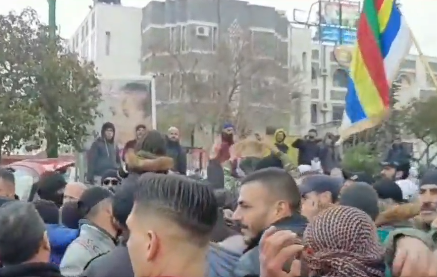Syria: Rare anti-government protests breakout in Sweida

Residents in Syria's Sweida province took to the streets demonstrating against collapsing living standards and corruption.
Pictures released on social media appeared to show locals from the southern province burning tyres and blocking the Sweida-Damascus highway.
Sit-ins also reportedly took in several other locations across the province.
Some demonstrators flew the multicoloured Druze flag, which represents the religious faith of the majority of the inhabitants of the region.
There have been sporadic protests in Sweida in recent years, a rare stronghold of discontent in government-controlled areas that President Bashar al-Assad has largely managed to wrestle into submission since the beginning of the civil war in 2011.
A combination of a decade of war, western sanctions, and the Covid-19 pandemic, however, have devastated the Syrian economy, pushing most of the population into poverty as the value of the Syrian pound has plummeted.
Government spending has been cut by more than 40 percent over the past two years, with cuts threatening a critical social support programme.
The Sweida demonstrations have now been ongoing for around a month, with much of the anger focusing on a government decision to exclude hundreds of thousands of people in the province from a subsidy programme.
The subsidy applied to ration cards which are used by millions of people in Syria. The government justified the cut saying it would instead aim to provide the subsidy to "more vulnerable people".
Many people in the province participated in the Syrian revolution in 2011, but as it developed into a civil war and the influence of hardline factions expanded, Sweida preferred to stand neutral.
Syria's war has killed close to half a million people and spurred the largest conflict-induced displacement since World War II.
Middle East Eye propose une couverture et une analyse indépendantes et incomparables du Moyen-Orient, de l’Afrique du Nord et d’autres régions du monde. Pour en savoir plus sur la reprise de ce contenu et les frais qui s’appliquent, veuillez remplir ce formulaire [en anglais]. Pour en savoir plus sur MEE, cliquez ici [en anglais].




